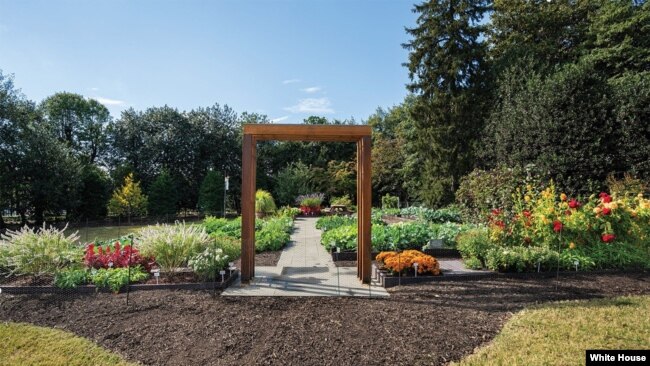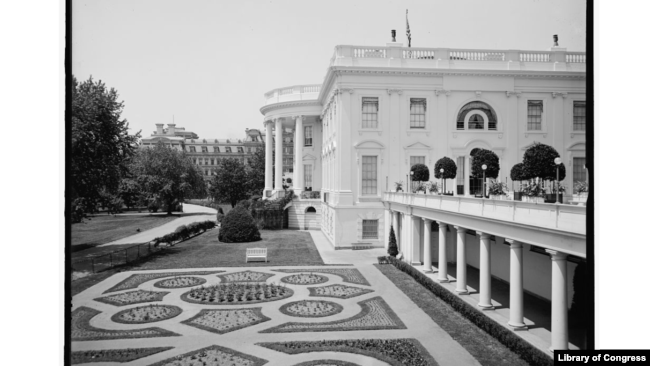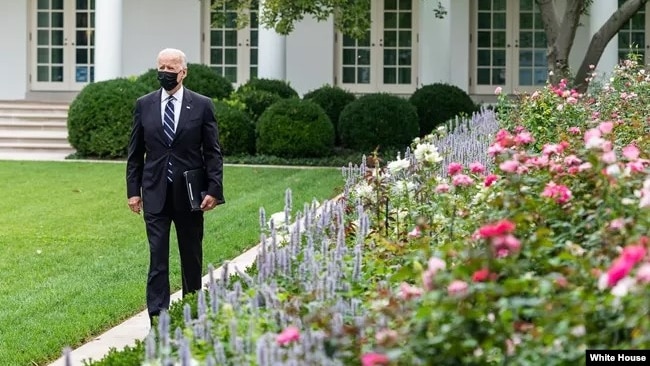 VOA — All About America explores American culture, politics, trends, history, ideals and places of interest.
VOA — All About America explores American culture, politics, trends, history, ideals and places of interest.
The earliest residents of the White House shied away from grand gardens reminiscent of the elaborate palace grounds that kings and queens might enjoy.
“You can understand that, given our democratic form of government. On the other hand, I think it was a visit to Buckingham Palace that motivated John Kennedy into wanting to do a face-lift for the garden outside the West Wing, outside the Oval Office, because it had gotten worn-looking and overgrown,” says Marta McDowell, author of “All the Presidents’ Gardens.”
From the start, presidents and their families exerted varying degrees of influence on presidential gardens, the 18 acres (7.2 hectares) of open space that serve as the yards — front and back — of the White House. Their choices often reflected their values and the traditions of their day.
“It’s really their home for the duration of their term of office, and within the constraints of the historic landscape plan and the committee that oversees it, as well as the National Park Service, they try to accommodate the desires of the administration,” McDowell says.
John Quincy Adams, America’s sixth president, actually worked in the garden. Theodore Roosevelt (26th president) tore down the executive mansion greenhouses, which were first built by James Buchanan (15th president) in the 1850s.
John Kennedy (35th president) famously revamped the Rose Garden in the 1960s, and first lady Michelle Obama (wife of the 44th president) built a food garden on the South Lawn in 2009, using seeds and plants from Monticello, home of Thomas Jefferson (third president). Today, the garden has more than 50 varieties of vegetables.
Pierre L’Enfant, the city planner and architect for America’s first president, George Washington, originally planned for a 75-acre (30-hectare) presidential garden. However, as a believer in small government, Jefferson reduced the White House grounds to just five acres (2 hectares), although they were eventually expanded to the current 18 acres (7.2 hectares). Jefferson also introduced geraniums to the presidential household, which were new to American gardening in the 1700s.
Jefferson, like many Americans who’d just freed themselves from a British monarch, was wary of creating a new king.
“Avoid palaces and gardens of palaces,” William Thornton, a Washington city commissioner warned. “If you build a palace with gardens, I will find you a king.”
Over time, several varieties of plants and flowers were planted at the White House. Roses have been part of the landscape at least since Jefferson’s time. First lady Nancy Reagan (wife of the 40th president) wanted peonies, while first lady Laura Bush (wife of the 43rd president) asked for Texas bluebells.
Oak and elm trees have also been on the White House grounds almost since the beginning. The tree house built for Amy Carter (daughter of the 39th president) was constructed in an atlas cedar tree on the South Lawn. A chestnut oak southeast of the White House might be the oldest tree on the grounds, according to the White House, a silent witness to executive mansion comings and goings since 1800.
McDowell says the White House gardens reflect American horticultural traditions over time — first inspired by Europe, and then shaped by local traditions, geography and climate.
“I am not suggesting that my research turned up this leading edge of gardening style at the White House,” McDowell says. “It’s not that they are always the leader. In fact, sometimes they’re following, sometimes I think they underscore a trend.”
She points to the Kennedy-inspired Rose Garden, designed by Rachel Lambert “Bunny” Mellon in 1962, as an example of bringing back a more formal, flowery style of garden. First lady Melania Trump (wife of the 45th president) faced backlash when she oversaw a renovation of the Rose Garden in 2020, which involved the removal of 10 flowering crab apple trees.
But McDowell found the revamp both timely and well-researched.
“Gardens are not a static thing. … Gardens are living things that grow,” McDowell says. “Even Mrs. Mellon, who was long gone by then, had once said, ‘A garden is always in the state of becoming’… and so, if you want a garden to keep going, once in a while, you’ve got to rejuvenate it.”
The White House grounds were open to the public up until 1923, when Calvin Coolidge (30th president) permanently closed them to unauthorized visitors.
“They are full of tradition. They’re full of beauty,” McDowell says. “Personally, I think it’s sad that they have to be so secure, but that is just a necessity of modern life. It used to be that you could walk into the White House grounds, but that is just no longer possible.”
These days, White House garden tours for the public are generally available twice a year, one weekend in the spring and again in the fall, usually in April and October.




